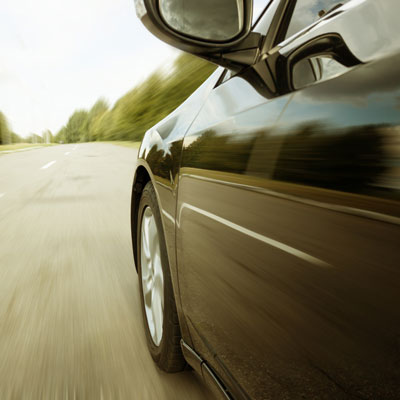A motor vehicle accident can disrupt your life immensely. It can cause physical injury and emotional harm, as well as a financial burden while you recover. If another driver is responsible for your accident, you can make a claim against them for damages.
However, proving fault and damages in a motor vehicle accident claim can be difficult, especially if several vehicles are involved and responsibility for the accident is shared.
Every motor vehicle accident is different. So you should know how to prove fault for a car accident to increase your chance of getting the compensation you deserve.

Claiming damages due to personal injury
If you have been injured in a car accident due to someone else’s negligence, you may be able to claim ‘damages’. This is a personal injury claim that covers physical and psychological harm. It can also cover any expenses or losses you have suffered due to your injury in the accident.
In Australia, motor vehicle drivers must have compulsory third party (CTP) insurance to cover them for the injury or death of other people in an accident they cause. It covers other drivers, passengers and pedestrians. As this is a ‘fault-based’ system, you need to prove that another driver was at fault to make a claim for compensation.
However, CTP insurance is limited in what it covers. While it does compensate for medical expenses and lost income, it doesn’t cover non-economic losses like pain and suffering. For this, you’d need to make a common law claim for damages. Just like CTP insurance claims, common law claims require you to prove the other party was at fault and that the accident caused your injury.
CTP insurance also doesn’t cover damage to vehicles or property. You would need to make a claim against the other driver for the cost of property damage.
Determining fault after a car accident
It’s essential to figure out who caused your car accident before you can start making a claim for damages. However, Proving fault and damages in a motor vehicle accident claim isn’t always simple – several drivers might even share fault for the accident. So how do you determine who is responsible?
If the police attend the accident scene, they can check any vehicle damage and each driver’s account of the accident to determine who is at fault. For example, the other driver might have been speeding or running a red light.
Often, the CTP insurance company investigates the accident to determine who is at fault. To do this, they may interview drivers, passengers and any witnesses to the crash. They’ll also check video footage, photos and other evidence.
If the incident goes to court, the court will decide who is at fault, though this doesn’t happen often. Usually fault is determined before it has to go to court.
Evidence you need to prove fault
It can be difficult to prove fault if there are no witnesses and a lot of circumstantial evidence. So you should consider getting legal assistance after a car accident. Your lawyer can help you gather the evidence you need to prove your case.
This evidence can include:
- details of the vehicles involved, including make, model, colour and registration
- names and contact details of everyone involved in the accident
- names and contact details of any witnesses
- photos of the accident before vehicles are moved and any damage to the vehicles
- a copy of the police traffic accident report if there is one.
Common fault scenarios
While it can be difficult to figure out who is responsible for a car accident, there are some common scenarios. It’s important to note that this is a guide only – there are always exceptions and every accident is different.
Reversing cars – If another driver hits your vehicle while they’re reversing, they are usually at fault. Drivers must not reverse until it’s completely safe to do so.
Side impact – If another driver hits your vehicle on the side, they will have damage to the front of their car (called ‘t-boning’). This can happen if they run through a red light or stop sign. In this case, that driver is usually at fault.
Rear impact – If another driver hits the back of your vehicle, they are usually at fault. Drivers must keep a safe distance between their car and the car in front.
Right of way – If another driver hits you at an intersection and they don’t have right of way, they are at fault. For example, if a driver is turning right, they must give way to oncoming traffic.
Car parks – If another driver hits your parked car in a car park, they are usually at fault, as they’re the one moving (assuming you’re legally parked).
Multi-vehicle accidents
If three or more vehicles are involved in your accident, it can be hard to figure out who is at fault and whose insurance should pay damages.
In these accidents, the police will probably attend the scene, which means there’ll be a traffic incident report. Insurance companies often use this report to determine fault in a multi-vehicle accident.
Camera footage and witness statements are also useful in these accidents. While it might be difficult for you to focus on these details after the shock of a car accident, it’s important to find out if pedestrians or nearby residents saw the accident.
Of course, you must first get help for anyone who needs medical attention.
Multiple drivers at fault
Sometimes more than one driver can be responsible for causing a car accident, especially in multi-vehicle accidents.
In this case, each at-fault driver will be liable for a percentage of the damages based on the extent of their responsibility. This is called ‘contributory negligence’ – when multiple drivers share the fault for an accident.
If you have been injured in a car accident and the other driver is partially responsible, you can make a claim against them, even if they’re also making a claim against you. This is called a ‘counterclaim’.
The key issue here is to work out the percentage of responsibility for the accident and the share of damages. You should try to work with the other driver to determine the percentage of responsibility. If you can’t agree on this, a court might need to decide for you.
In this scenario, you definitely need a highly experienced car accident lawyer on your side!
When a claim is made against you
If the other driver believes you’re at fault for the car accident, they can make a claim against you. They might claim for personal injury against your CTP insurance. They might also send you a letter of demand asking you to pay for damage to their vehicle and other property.
If this occurs, you get should get advice from a professional motor vehicle accident lawyer immediately! Even if you agree that you’re at fault, the situation may not be straightforward – you might actually share responsibility for the crash.
The other driver needs to provide evidence of their claim that you’re responsible and the amount of damage they’re claiming against you. If necessary, we can negotiate with the other driver or their insurer on your behalf.
Time limits for car accident claims
While you do have some time after your car accident date to claim damages, you should try to make a claim sooner rather than later. It is easier to gather witness statements and other evidence immediately after the accident than later when memories start to fade.
The good news is that most cases are resolved through negotiation without having to go to court. But if you can’t reach an agreement about who is at fault for the accident or the amount of damage or injury that’s been caused, you might need to go to court.
Unidentified at-fault drivers
A key factor in determining fault and claiming for damages is identifying the at-fault driver. Unfortunately this isn’t always possible, as the at-fault driver might take off after the accident or refuse to give their details.
However, if you’re injured in a car accident and can’t identify the at-fault driver or they won’t provide you with their details, there are other ways you can make a claim.
In Queensland and New South Wales, you can claim against the Nominal Defendant, a statutory body that acts as the CTP insurer for vehicles with unidentified or uninsured drivers. The Nominal Defendant is liable for any personal injury compensation that the other vehicle owner would’ve been liable for.
You have three months from the accident date to make a claim to the Nominal Defendant. To be successful, you need to prove that you can’t identify the driver after a thorough search.
How Main Lawyers can help
If you’re injured in a car accident, you might not be physically or emotionally able to collect evidence and proving fault and damages in a motor vehicle accident claim can keep you from pursueing your rights to making a claim.
At Main Lawyers, we can take on these tasks for you. We can help you to assess your rights and gather the correct evidence, determine who was at fault and guide you through the claims process. We will also negotiate with the other driver or their insurer to get you the settlement you deserve.
Don’t delay – contact our legal team for a free, no-obligation discussion today!



